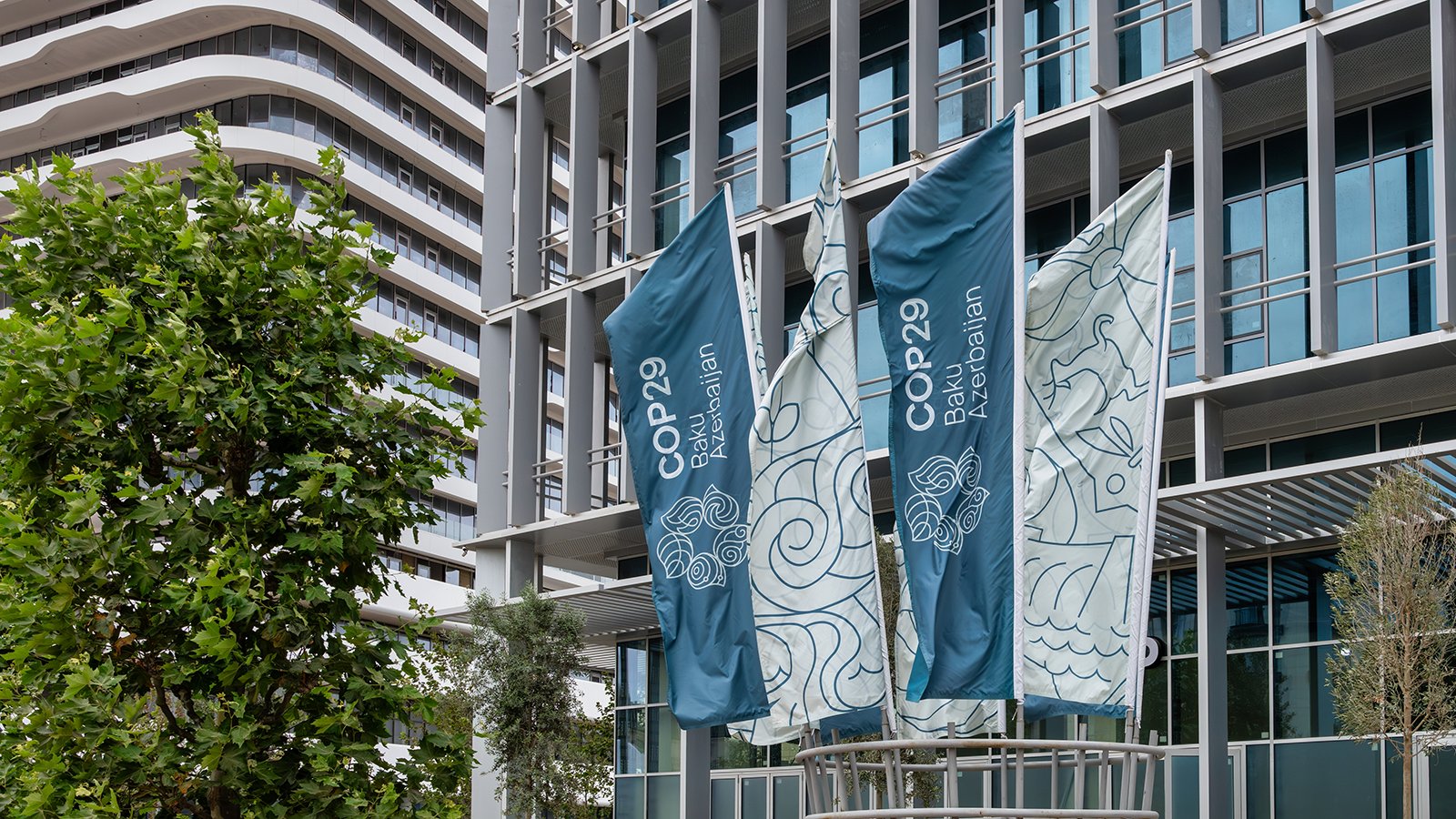Climate Finance and Climate Mobility at COP29
Climate hazards drive displacement and cause major economic and non-economic losses. COP29 in Baku offers a key chance to set a new global finance goal. Learn more about our role in these discussions and our partners' plans for COP29.
Climate hazards are driving displacement and causing significant economic and non-economic losses, as seen with the 2022 floods in Pakistan, the ongoing drought in the Horn of Africa, and rising sea levels threating small island states. The Global North is also facing escalating impacts, including this year’s deadly floods in Central Europe, Hurricane Milton in Florida, and record-breaking wildfires in Canada.
Projections indicate that floods, droughts, heatwaves, and other climate-related hazards are becoming more intense, prolonged, and frequent. Climate-related migration is already a major consequence, with over 20 million people displaced by weather-related disasters in 2023 alone. Without substantial emission reductions, the World Bank estimates that up to 216 million people could be forced to move within their own country by 2050.
"We must create equitable financing mechanisms that empower communities to minimize the impacts of the climate crisis and build resilience for the future.”
Why does COP29 matter?
The upcoming COP29 in Baku will continue global discussions on climate change, with a focus on climate finance. Key debates on adaptation and loss and damage financing are critical for addressing climate-related migration. While migration – especially when forced – can be an adaptation strategy and considered a form of loss, it is equally important to account for those who are unable to migrate. As a result, financing mechanisms must address the full spectrum of climate-related human mobility, encompassing both those who can move and those who cannot.
Last year’s COP in Dubai advanced climate finance, including the establishment of the Loss and Damage Fund (LDF), whose funding arrangements mentions supporting “equitable, safe and dignified human mobility in the form of displacement, relocation and migration in cases of temporary and permanent loss and damage”. However, the LDF remains underfunded, and the challenge of ensuring climate finance reaches the local level is still unresolved.
Background on the Negotiations
The current climate finance agreement, set in 2009 and 2015, aims to mobilize US$100 billion annually for mitigation and adaptation in developing countries until 2025. At COP29, a new climate finance target, the New Collective Quantified Goal (NCQG), will be set to exceed US$100 billion, focusing on the needs of developing nations. Thus, COP29 could redefine how finance for loss and damage links to adaptation and mitigation finance, how much funding is seen as required, who contributes, who receives it, what will be financed, the modalities of finance, and the role of the private sector.
High expectations and past failures in climate finance/action
The negotiations on a new climate finance goal come with high expectations and a history of missed targets, including the US$100 billion goal, which was unmet until 2022 and Oxfam has even questioned the accuracy of reported figures. The NCQG offers the first chance in a decade to set a global finance target that addresses the Global South’s needs. However, despite some progress, concerns remain about slow discussions and the inclusion of the LDF.
To ensure climate finance is effective, it is essential to establish quality standards that uphold human rights, informed consent, gender equality, accessibility, responsiveness to marginalized groups, affordability, and avoid exacerbating debt. Weak or absent standards highlight the need to strengthen actors who monitor and advocate for these principles, while providing best practices for implementation. A major challenge, as identified by the World Bank, is directing more resources to vulnerable communities instead of bureaucracies.
“We cannot dream of a just future without standing strong with the communities that are fighting today to protect their homes, their livelihoods, and their heritage.”
The Loss and Damage Collaboration emphasizes the importance of recognizing and mobilizing the "lived experience, agency, knowledge, capacities and expertise" of displaced people to create solutions that truly address their needs. Alongside addressing representation issues in decision-making bodies like fund secretariats and advisory boards, collaboration with communities — both migrant and host — is essential for informed and targeted local solutions, as the Internal Displacement Monitoring Centre (IDMC) and Refugees International have highlighted.
What role do we have?
The existing climate finance architecture is not yet fit for purpose and must evolve to respond more swiftly and locally, prioritizing the communities most affected by the climate crisis. With our partners, we pilot and promote new ideas and approaches to ensure timely and equitable access to climate finance and to involve affected communities in decision-making.
The upcoming COP presents a key opportunity to highlight the results of these partnerships in international climate finance discussions, foster multi-stakeholder collaborations, and advocate for principled, timely, and effective climate action that is community-led and responsive to the needs of vulnerable populations.

